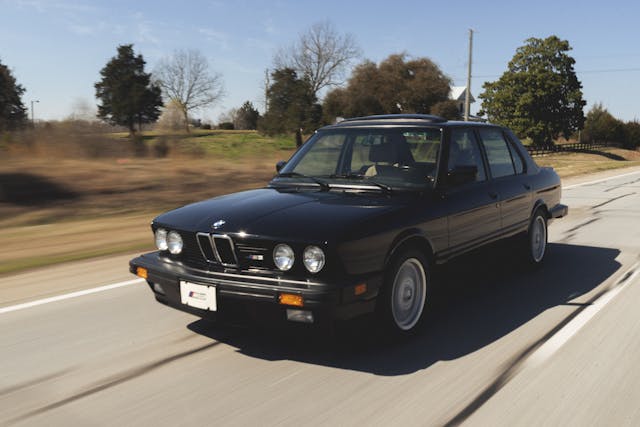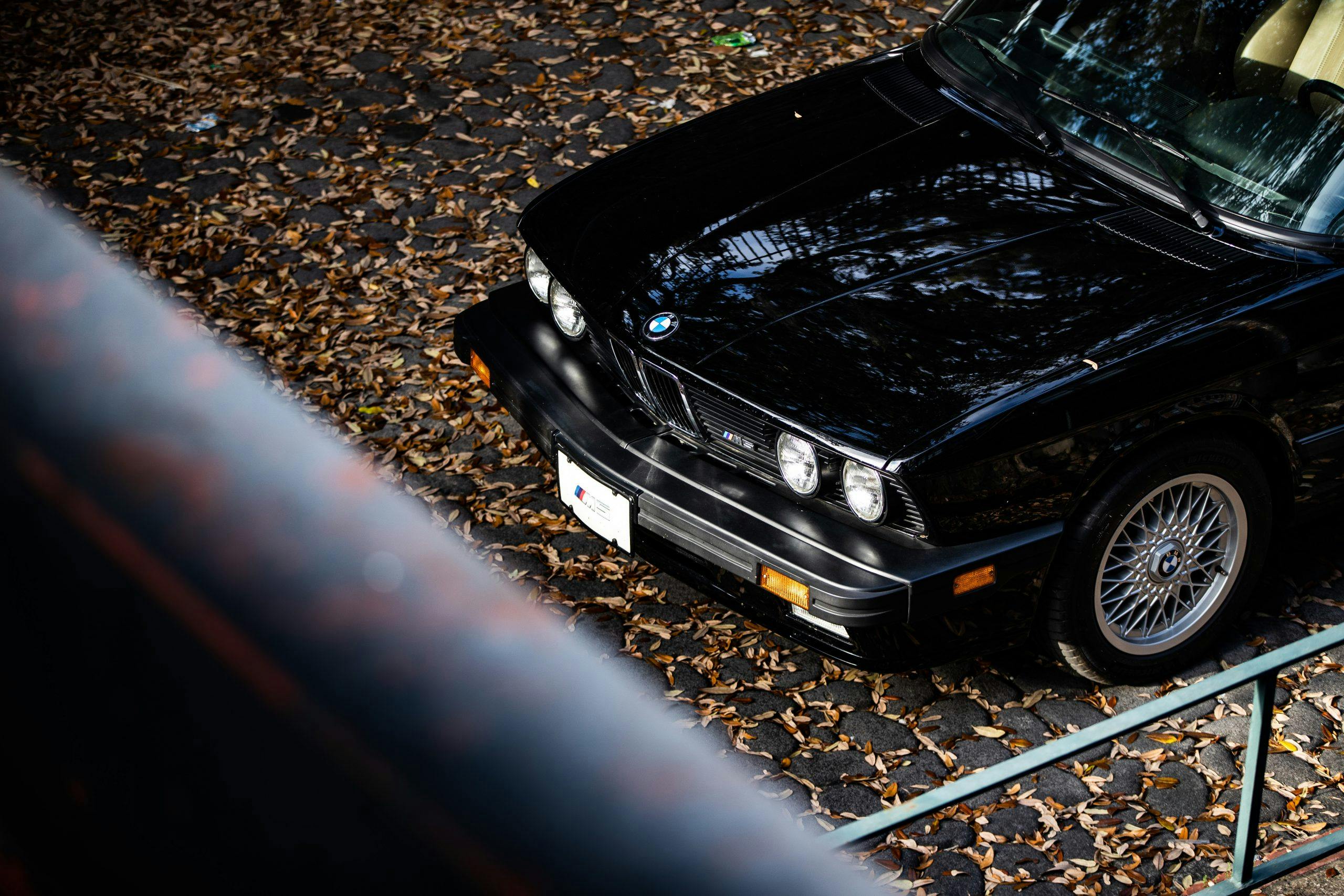Media | Articles
My old BMW M5 is the perfect example of third-owner syndrome
About ten years ago, I bought a 1988 BMW M5. One of the earliest Motorsports cars brought to the U.S., the Darth Vader black five-speed E28 M5 was part of the first wave of uber-performance sedans that stuck a shiv into the ribs of the Malaise Era. The original list price of the car was $46,500, or, about $120,000 in today’s dollars. The first owner was a doctor in Seattle, but by the time I got my grubby bottom-feeder paws on the car, it had been through two subsequent owners and had some significant needs. But in life, timing is everything, and I wound up doing just fine because of a little luck and the quirks of the collector car market.
Third-owner syndrome is now a term of art, that as nearly as I can tell, was coined by Hagerty Price Guide Publisher Dave Kinney. It describes the situation in which buyers of fully depreciated exotics can afford the initial buy-in, but when it comes to exotic car maintenance, let’s just say that more basic needs, like food and shelter expenses, divert a significant amount of cash. My M5 was a textbook example. I bought it after a phone call from my good friend, the late Paul Duchene, a longtime Hagerty contributor. It was being stored outside under a tarp somewhere in rural Oregon. He thought it probably ran, or at least would run.

As I recall, it ran well enough to get itself up on a trailer, and my all-in price for the car was about $10,000 delivered to Ann Arbor. Cosmetically, it wasn’t bad—the seats were a little dry, and the black paint was a web of swirl marks, as if the third owner had habitually wiped down the wheels and then dried the car with the same gritty towel. The seats responded to some intensive treatments, and the paint corrected just fine. Tires, calipers, fuel injectors, and a tank cleaning had the car running like a champ. None of this work was horribly pricey—I think it totaled around $4000. But for the third owner of the car, it might as well have been $40,000, or $400,000.
It’s a story that plays out frequently in the collector car world. The first owner is an obviously well-to-do individual, and if he or she is someone who trades cars frequently, owner number two (who is often only slightly less well-to-do, and perhaps even a little more savvy), can often get a nice used car with some warranty left. This person often gets the remainder of the “good” miles out of the car, finally letting it go when it’s almost fully depreciated and starting to show its age.
Enter the starry-eyed third owner, who thinks that he or she can get away with just putting in gas and oil, and maybe even DIY some of the maintenance. Then they buy a shop manual and quickly get overwhelmed at the first sight of a wiring diagram. One of three things inevitably happens—they get sick of the car taking up space and cut it loose; they put the minimal amount of money into keeping the car on the road while deferring any expensive maintenance until the can can’t be kicked any further; or they hang on long enough to actually see some appreciation.

Picking up a coveted car that’s gone through the life cycle I’ve described can be a bit of a gamble. The M5 offers a bunch of potential pitfalls: wear items, like shot front-control arms, can add up. Certain elements like the rear Self Leveling Suspension are costly on their own. Don’t get me started on engine maintenance—worn timing chain guides can cause the engine to jump timing, and trust me, you don’t want to try to find a replacement cylinder head for these cars. There was a non-zero chance that if I didn’t play my cards right and do my homework, a car like this could end up putting a hole in my wallet and have me well underwater after all was said and done.
That said, I’m a bit of an ambush predator. I’d always wanted an E28 M5. I knew that they could swallow a fair bit of cash, and the only way that this hobby has worked for me is to not lose a bunch of money whenever I move on. So I waited in the weeds for these cars to show some sign of catching on in the collector car world. That’s the key, whether for my M5 or that car you can’t get off your mind—it can take a market increase to change the economics of repairs. I got in toward the end of the low prices, got the maintenance up to snuff, enjoyed it for a while, and sold it for a few grand more than I had in it. Those are the joys of being the fourth owner. But that’s a story for another day.
***
Marketplace
Buy and sell classics with confidence
Check out the Hagerty Media homepage so you don’t miss a single story, or better yet, bookmark it. To get our best stories delivered right to your inbox, subscribe to our newsletters.






So funny and true – I am the third owner for three of my five cars, and they are cars that would be ‘too expensive’ for a cheapskate like me to buy new.
I’ve lost money on every classic car I’ve owned…and I’m not sure I care…I wasn’t in it for the money to begin with.
Just bought a 1969 SAAB Sonett V4. The previous owner had it for 24 years in Phoenix, AZ and thought that he might be the second owner (unlikely), making me hypothetically the third. It sat for 2 years but runs and seems to have no rust, but it came to Tucson on a trailer, ’cause I’m too old to be starry-eyed optimistic and drive the 100 miles home. I’m hoping the the slight fuel and coolant leaks will be easy fixes. At least it should be easier to fix up than the rusted-out ’68 Sonett of my youth that I always meant to get back on the road.
In 1984, there was no such thing as an M5. But, there was the 533i with a manual transmission, and I bought mine new. Thirteen years later and 150,000 miles and it was still running strong with just basic maintenance. Until someone hit me and my insurance company totaled it with only $3,000.00 worth of damage. I had to give it up since I couldn’t get a title for it in that condition. It was one of the best cars I have ever owned and I would love to have it back